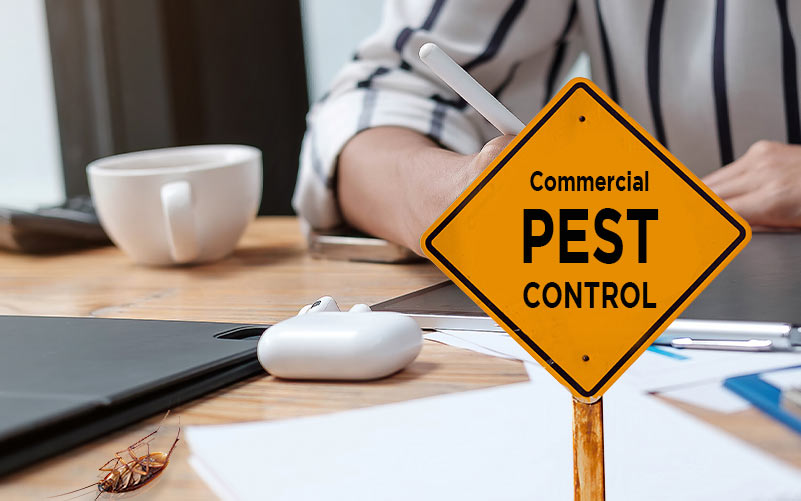Experienced A1 Exterminators Charlotte NC - Quick and Dependable Solutions
Bed Pest Treatment Breakdown: Comparing Chemical Vs. Non-Chemical Solutions
In the realm of parasite control, especially when managing the persistent problem of bed pests, the choice between chemical and non-chemical treatment solutions can be a crucial one. Both approaches supply unique benefits and drawbacks, influencing variables such as efficiency, security considerations, and total cost. By checking out the nuanced details of each technique, a more clear understanding of which course to pursue in dealing with a bed insect problem can be attained.
Efficiency of Chemical Therapies
Chemical therapies for bed pest infestations have been commonly identified for their quick and powerful effectiveness in removing these parasites. When taking into consideration the effectiveness of chemical treatments, it is important to recognize that they can give a quick and comprehensive remedy to a bed pest problem. Expert pest control men usually count on pesticides to target bed pests at numerous phases of their life process, consisting of fairies, grownups, and eggs. These chemicals generally work by disrupting the bed bugs' nerve system, leading to paralysis and ultimate death.
Furthermore, chemical treatments have the benefit of using residual results, suggesting that they can remain to eliminate bed pests also after the initial application. This recurring activity is particularly advantageous in combating any possible re-infestations. Furthermore, the rapid activity of chemical treatments can bring alleviation to people facing extreme bed insect infestations, permitting them to gain back control of their home swiftly.
Security Interest In Chemical Solutions
One vital facet that calls for mindful consideration when utilizing chemical solutions for bed bug treatment is guaranteeing the safety of owners and the setting. Exposure to certain chemicals used in bed bug treatments can lead to respiratory concerns, skin irritation, or other unfavorable reactions, particularly in individuals with pre-existing conditions or level of sensitivities.
Additionally, the environmental influence of chemical remedies is an additional considerable consideration. Some pesticides used in bed pest therapies may be hazardous to advantageous insects, wild animals, and ecosystems if they seep right into the soil or water systems. It is necessary to use chemical therapies deliberately, adhering to safety standards, and thinking about less poisonous choices to alleviate these threats and make sure the reliable and safe management of bed pest problems.
Benefits of Non-Chemical Strategies
Thinking about the possible safety concerns and environmental impact connected with chemical remedies for bed bug treatment, checking out non-chemical methods presents a promising option with numerous distinctive benefits. Non-chemical treatments are ecologically friendly, as they do not contribute to air or water pollution, making them a sustainable selection for parasite control.
Furthermore, non-chemical services can be efficient in targeting bed insects, consisting of hard-to-reach locations where chemical treatments may not pass through. Techniques such as warmth treatment, vacuuming, heavy steam cleansing, and bed mattress coverings offer comprehensive elimination without using unsafe chemicals. Moreover, non-chemical methods can be less disruptive, requiring minimal preparation and permitting quicker reentry into treated locations. On the whole, choosing non-chemical bed pest therapy approaches not just focuses on security and environmental management but also ensures effective and thorough parasite control.
Limitations of Non-Chemical Treatments

Furthermore, non-chemical therapies frequently call for numerous applications to achieve successful elimination. This can be taxing and may not always ensure full removal of all bed pests and their eggs, specifically in hard-to-reach or hidden places.
Moreover, the success of non-chemical therapies best site greatly counts on proper application and thoroughness, which can be testing for people without specialist proficiency. Inadequate application of non-chemical techniques may lead to insufficient elimination, bring about consistent infestations and the need for added treatments.
For that reason, while non-chemical treatments have their benefits, it is vital to recognize these constraints and consider them when establishing one of the most reliable strategy for taking care of bed pest invasions.
Cost Contrast: Chemical Vs. Non-Chemical Options
Given the restrictions linked with non-chemical treatments, an important facet to review in the context of bed pest management is the expense contrast in between chemical and non-chemical choices. In contrast, non-chemical treatments like warmth treatment or heavy steam can be more costly, with expenses ranging from $1,000 to $6,000 for an entire home. While the preliminary price of chemical treatments may appear lower, several therapies might be required to fully remove the infestation, potentially boosting the overall cost.
Verdict

Taking into consideration the prospective safety problems and environmental influence best termite treatment company associated with chemical options for bed bug treatment, discovering non-chemical techniques provides a promising option with numerous distinct advantages.Provided the limitations linked with non-chemical treatments, an essential facet to assess in the context of bed insect administration is the price contrast in between chemical and non-chemical alternatives. In comparison, non-chemical therapies like heat treatment or heavy steam can be a lot more pricey, with costs varying from $1,000 to $6,000 for an entire home. While the initial cost of chemical treatments may seem lower, multiple treatments may be called for to completely eliminate the infestation, potentially raising the general expense.In final thought, when contrasting chemical and non-chemical bed insect therapy options, it is vital to think about efficiency, security, benefits, restrictions, and expense.